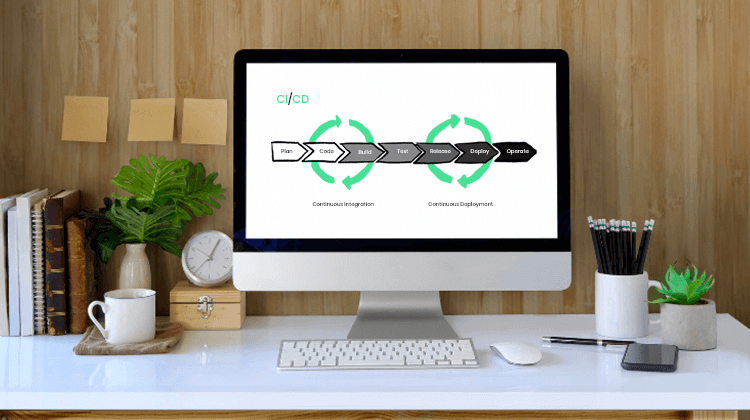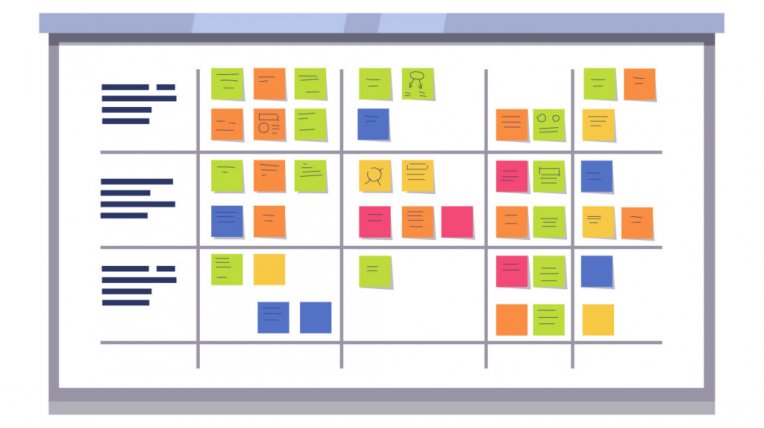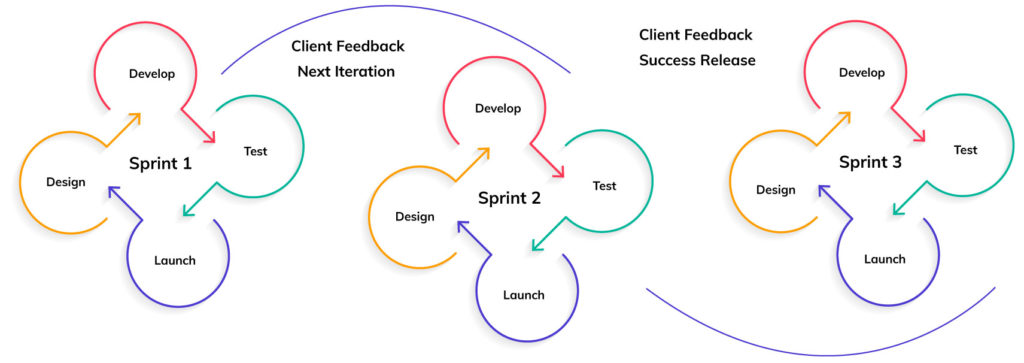Continuous Integration and Deployment in Agile

As a software application becomes more complex, it’s difficult to manage the many changes, bug reports, new feature deployments, and contributors to the codebase.
These challenges are why many development teams have adopted Agile.
Agile methodologies streamline the software development lifecycle in many ways, including the ability to leverage continuous integration and continuous delivery (CI/CD).
Waterfall Methodologies Are No Longer Optimal for Development
When you hear about Agile, you usually hear it compared to older Waterfall methodologies. Waterfall methods were popular—and still are with some projects—when the software was less complex and continuous integration wasn’t an issue. Applications had a smaller codebase and only a few dozen features, and the quality assurance (QA) people could test it soon after it was developed.
Waterfall methodologies are still useful for small projects in which only a few features are developed into the application, and very few changes are made in future versions. Small projects with few changes don’t usually need continuous integration, and every phase of the lifecycle (e.g., design, development, testing) only needs to be done once before deployment. These applications typically have a limited scope that is well defined during the design phase, with few changes to scope during development.
For larger, complex applications, Waterfall becomes challenging. To avoid Waterfall’s pitfalls, many development teams use Agile methodologies and practices. Agile continuous integration (CI) and continuous deployment (CD) add efficiency and speed of deployment to the software lifecycle.
What is Continuous Integration and Continuous Deployment?
Continuous integration (CI) is the process of taking newly committed code and automatically adding it to a testing and staging environment for QA. The testing phase could be automated or manual. Many organizations use both automated and manual tests to validate software version stability before deploying it to production. Deploying buggy code loses customer trust, so several tests are done before code is sent to production. Traditionally, this occurred after developers uploaded code to a testing environment, but CI runs tests on new code as soon as it enters the main repository.
Continuous deployment (CD) adds an additional step to the automation process where code is sent to production after it passes a series of tests. Only if testing fails will the code be sent back to developers, and the automation process will remove it from the next deployment. Once developers fix any issues, the process is repeated until it’s finally sent to production.
With CI/CD, integration of the latest software upgrades happens faster, is seamless to your users, and helps development teams become more agile.

How Continuous Integration and Deployment Increases Efficiency
Every application starts with an idea and goes into development with a plan. Even the simplest app could be subject to a lifecycle with revisions and improvements added in future versions. CI/CD makes these versions happen faster with less effort required from the development team, allowing them to focus more on the code.
The automated nature of CI/CD allows for faster versioning and upgrades. Each step in the lifecycle will seem familiar to a development team that has a process already in place. The steps in CI/CD are as follows:
- Build and compile code committed to the codebase by developers.
- Run unit tests on the code to find errors.
- If no errors are found, move the code to a staging environment.
- Tests are again run against the codebase using scripted tests, manually tested, or both.
- If CD is also a part of the environment, then the tested code is deployed to production.
If any of the testing steps fail, automation stops at the point where errors are found, and developers are notified that their code must be revised. Note that continuous deployment is different than continuous delivery because continuous delivery uses manual deployment to upload changes to production, whereas continuous deployment automates this step.
For the best and fastest software lifecycle, developers aim to integrate continuous deployment into their process to make it more efficient. However, with large version changes, a development team might opt to manually deploy to production instead. There could be additional steps to deployment for large version changes (e.g. a one-time server configuration changes), or changes might need QA approval from a stakeholder before they are considered complete.
Before Using CI/CD, Understand the Pitfalls
Before getting into Agile continuous integration and deployment, it’s important to recognize when these procedures aren’t viable for your project or when they could damage the end product.
If an application already requires heavy maintenance and bug fixes, CI/CD could become too much overhead. For example, if your application becomes very complex, has several moving parts, and developers cannot take the time to fix issues found with automated tests, it might be better to focus on fixing all bugs and then deploying after they have all been resolved.
Extremely small projects might still benefit from Agile, but CI/CD might be too much overhead. For instance, if you have a simple one-screen desktop application that only performs a few functions, it might not make sense to use CI/CD.

Adapting to Agile and CI/CD
Agile breaks development into short iterative “sprints” that allow for more flexibility during development. These sprints break down development into small sections where each developer works on a section that could take anywhere from a few hours to several weeks to complete.
After development completes a feature, they send it to QA for testing. After testing, a project manager reviews results with stakeholders who either sign off on progress or ask for changes. If changes are required, the section of the application is sent back to developers to design requested changes into each feature.
With Agile and large applications, the iterative process of designing, developing, testing, tweaking, and deploying never ends.
Continuous integration and deployment are critical when flexibility and speed are necessary for an application with frequent changes and many deployments. Most development teams take parts of Agile and compile their version of it, but continuous integration and deployment are always the foundation for successful implementations. By using Agile continuous integration and deployment, the development team reduces risk, speeds up every aspect of development, and becomes flexible to changes to satisfy stakeholders.
If your team isn’t already using Agile, converting to its methodologies takes some time and planning. It’s much different than Waterfall and takes more team effort and collaboration.
Scrum
Scrum and Agile are often conflated, but you do not need to hold Scrum meetings in addition to following Agile procedures. Scrum is often combined with Agile with large applications to ensure development success, but it’s not necessary. Every development shop has its Agile hybrid system that works for the team.
Planning Poker
The most notable phase in Agile is designing an app step where Planning Poker creates a game out of time and effort estimates. In this phase, cards are given to each developer with numbers that represent the effort required to complete a component of the application. A component is presented to developers, each developer plays a card and the effort card played the most is voted in as the dedicated hours needed to complete the application component. If one developer’s estimate is drastically different, they are given the chance to explain why. This can reveal roadblocks or complexities the rest of the team was unaware of.
Sprints
After effort is established, sprints are created by a project manager or lead developer. Sprints are broken down into days, weeks, or months depending on the development effort translated into the number of hours.
After each sprint, the developers meet to discuss their progress with the project lead or project manager (PM). The lead or PM can then create spreadsheets and graphs that let key stakeholders know the progress of the application and estimate a time for delivery. Specifically, a PM creates a Burndown Chart that displays team velocity, which is the amount of effort completed and the pace at which a project is developed.
Automated Testing
After the team completes a sprint, QA tests the code using automated scripts, manual testing, or both. If no defects are found, it’s sent to deployment. Specific agile deployment days can be scheduled, but continuous integration releases updates as developers complete them. Continuous integration speeds up development so that business stakeholders no longer need to wait for the rest of the application to be finished before seeing results.
Automated Deployment
With CI/CD, a truly Agile development team can offer continuous deployment. This step takes more organization, testing, and most of all automation of the deployment process. In traditional development, deployment days are once a month or (at most) once a week. Continuous deployment automation updates applications as soon as they pass QA. Instead of getting updates every few weeks, stakeholders have immediate changes uploaded to the application rapidly with little effort from developers who traditionally must back up, upload, and review changes after deployment.
CI/CD Means Better Performance and Productivity in Software Development
Agile continuous integration takes time for a team to adapt to, but it significantly benefits businesses requiring greater dexterity to meet market fluctuations.
If your team hasn’t already implemented CI/CD, you’re missing out on a success rate of two times more than traditional methods.
Taazaa incorporates both Agile and CI/CD to ensure our clients achieve flexibility in software design, better communication among stakeholders and developers, and a continuous deploytment of new software for increased staff productivity and sales.

